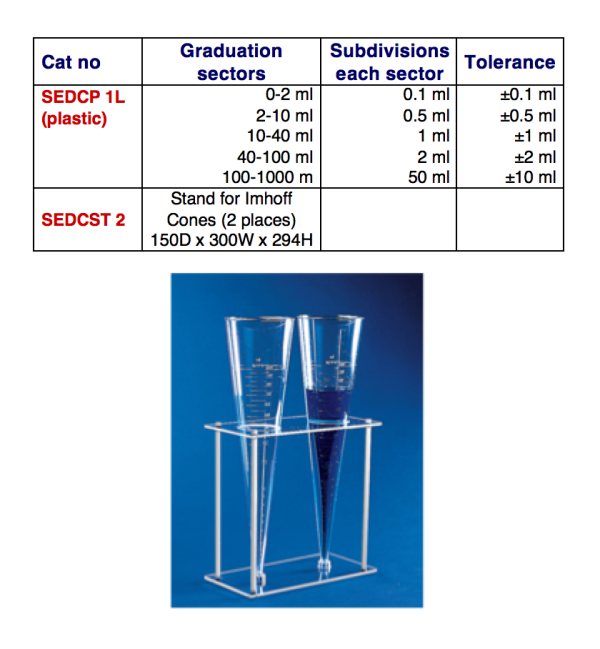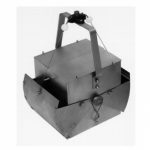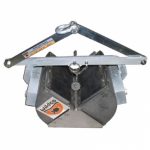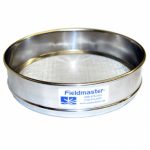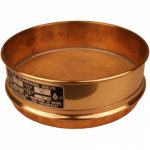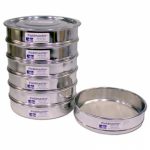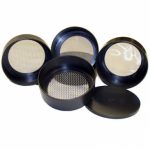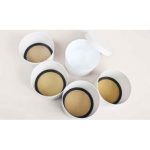Plankton Net

Ideal for horizontal or vertical tows in fresh or salt water. Attach a 1/8 line to the top and tow slowly, regulating depth by speed. For horizontal sampling, attach our line weight part number 426-E50.Nitex® net with nylon sleeve on stainless steel ring. 3 lines attach ring to heavy nickel plated brass swivel.
Plank Tow Net 8″ 10Mu.
Plank Tow Net 8″ 20mu.
Plank Tow Net 8″ 35Mu.
Plank Tow Net 8″ 53Mu.
Plank Tow Net 8″ 63 Mu.
Plank Tow Net 8″ 80 Mu.
Plank Tow Net 8″ 118 Mu.
Plank Tow Net 8″ 153 Mu.
Plank Tow Net 8″ 243 Mu.
Plank Tow Net 12″ 53 Mu.
Plank Tow Net 12″ 35Mu.
Plank Tow Net 12″ 20Mu.
Plank Tow Net 12″ 10Mu.
Plank Tow Net 12″ 80 Mu.
Plank Tow Net 12″ 100 Mu.
Plank Tow Net 12″ 118 Mu.
Plank Tow Net 12″ 243 Mu.
Plank Tow Net 12″ 153 Mu.
Plank Tow Net 12″ 63 Mu.
Contact Us for more info.
Imhoff (Sedimentation Cone)
The Imhoff cone is a tool commonly used in biofloc systems to measure the volume of settleable solids (solids that can settle) in water. In the context of biofloc, the uses of the Imhoff cone are as follows:
1. Measuring Suspended Solids
2. Managing Biofloc Balance
3. Assessing Biofloc System Effectiveness
Optimal Levels of Settleable Solids:
Fish: 10–15 mL/L.
Shrimp: 5–10 mL/L.
How to Use the Imhoff Cone in Biofloc:
1. Collect a water sample from the biofloc pond.
2. Pour 1 liter of the sample into the Imhoff cone.
3. Let it sit for 15–30 minutes until the solid particles settle.
4. Read the volume of settled solids at the bottom of the cone (usually in mL/L).
5. Record the results to monitor changes in the biofloc system.
Rack is sold seperately
Soil Grab
Van Veen Grab with Crate
This grab takes large samples in soft bottoms. Its long lever arms and sharp cutting edges on the bottom of the scoops allow it to cut deep into softer bottoms. The closing mechanism is our patented self- releasing pinch-pin™ attached to the two closing arms which holds the grab open before it hits the bottom. Upon impact, the tension on the chains is released, which releases the pinch-pin™. The chain pulls the closing arms together to close the scoops when the cable is lifted. The top of each scoop is covered with 583 mm stainless steel screen for water to flow through during descent. The screen is covered with a neoprene rubber flap to prevent sample washout during retrieval. Operation requires 1/8″ cable (61-B) and winch, not included. Ship wt: 67 lbs.
Ekman Large SS 9 X 9 X 9″ Kit.
This is the grab to choose for soft, finely divided littoral bottoms that are free from vegetation, such as sticks and decayed leaves (or with short, erect vegetation only) as well as intermixtures of sand, stones and other coarse debris. The specialized function of this dredge is the taking of quantitative and qualitative samples of macroscopic bottom fauna to determine the productivity of soft bottoms, particularly those composed of finely divided muck, mud, ooze, submerged marl and fine peaty materials. Versatile and durable, it is suited for preliminary as well as more precise observation. It is not recommended for rocky or sandy bottoms or moderate macrophyte growth because small pebbles or macrophyte stems prevent proper jaw closure.
This kit includes 3-197-C15 Ekman Large SS 9 X 9 X 9″, 3-45-B10 split messenger (11 oz), 3-62-C15 Polyester 3/16″ line 100ft and 3-910-A26 plywood case.
Petite Ponar Grab
Lighter by half than standard Ponar® Grab
• Designed for hand line operation
• Removable top screens
• Self-releasing pinch-pin™, heavy duty hinges
• Extra weights available for more penetration
• Center pivot for low bottom disturbance
This scaled-down sampler gives a whole new meaning to the word “petite.” We mean it can be easily carried by one person in one hand. You may still need good muscle mass, but since it weighs under 25 pounds, you can use it on a line without the winch and crane recommended for the larger version. This dredge shares the same basic design as our standard Ponar® sampler with stainless-steel construction and cast scoops. Uses 3/16”+ line or 61-B14 cable, sold separately. Also available with carrying case (3-1728-G32).
Materials: 316 stainless steel
Fasteners, screen: 18-8 stainless steel
Weight & volume: 6.8 kg (24 lb) weight; 2.4 Liter volume
Total weight: 14 kg (28 lb)
Sample area: 152 x 152 mm (6 x 6”)
Contact Us for more info.
Sieve
These economical sieves are made of stainless steel mesh with steel frames. These sieves may be used for geological particle sizing. They are available as a set of 6 with a lid and a catch pan, or they may be purchased individually.
Sieves are available in the following mesh sizes: 5 (4000 micron), 10 (2000 micron), 35 (500 micron), 60 (250 micron), 120 (125 micron), and 230 (63 micron).
Sieve diameter is approximately 7 inches.
Metal Sieve, US Standard 5 mesh (4000um), Fieldmaster®
Metal Sieve, US Standard 10 mesh (2000um), Fieldmaster®
Metal Sieve, US Standard 35 mesh (500um), Fieldmaster®
Metal Sieve, US Standard 60 mesh (250um), Fieldmaster®
Metal Sieve, US Standard 120 mesh (125um), Fieldmaster®
Metal Sieve, US Standard 230 mesh (63um), Fieldmaster®
Includes Lid and Pan.
These economical sieves are made of stainless steel mesh with steel frames. These sieves may be used for geological particle sizing and an assortment of other uses. This sieve set comes with 6 sieves, a lid and a catch pan. (Also may be purchased individually.)
This sieve set lets students separate and grade soil and rock samples in order to determine the makeup of the soil strata. Each set stacks together and includes bottom pan and lid with Teacher’s Guide. 6-3/4″ x 3″ with wire mesh bottom.
Set of four includes: #5, #10, #60, #230 (4000 um, 2000 um, 250 um, 63 um)
Separate and grade dry soil samples into five different size ranges from pebbles to silt. This set includes one cover, one solid bottom container, and stacking containers with #6, #20, #40, and #100 wire mesh screens.

